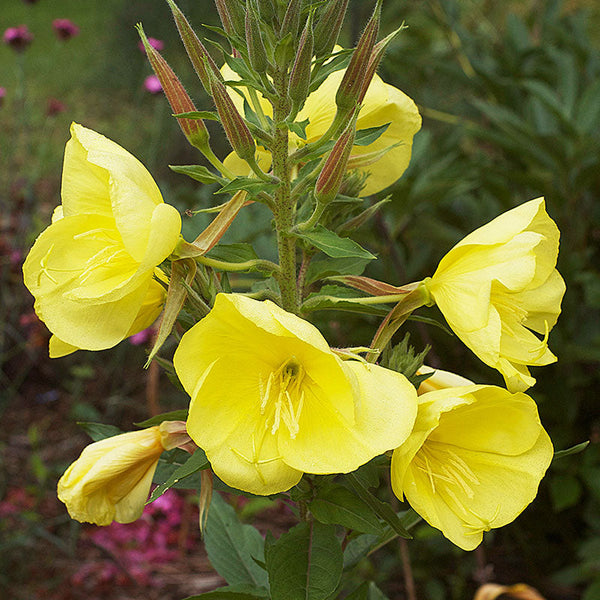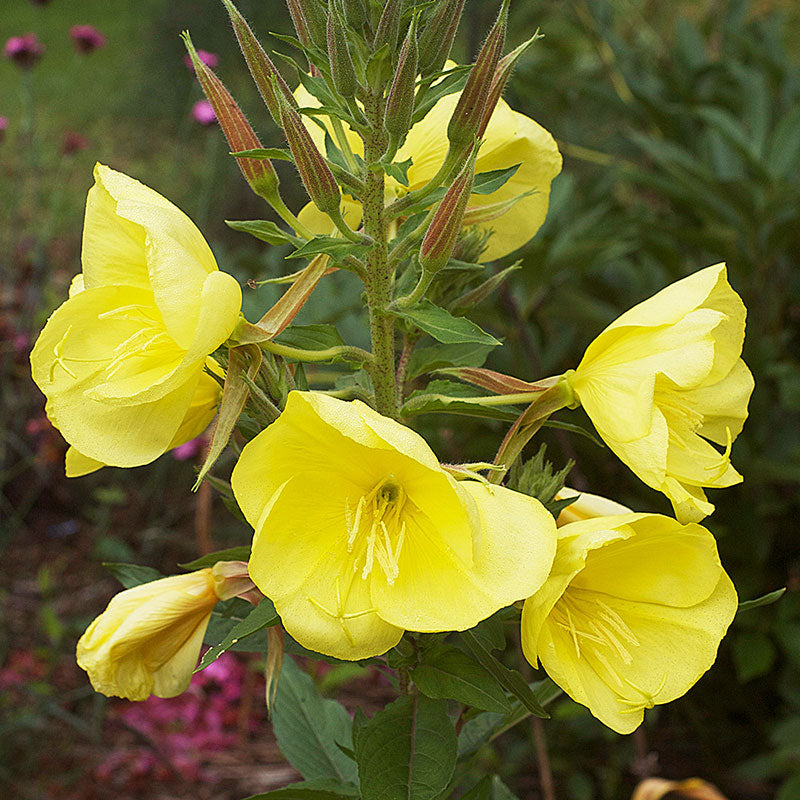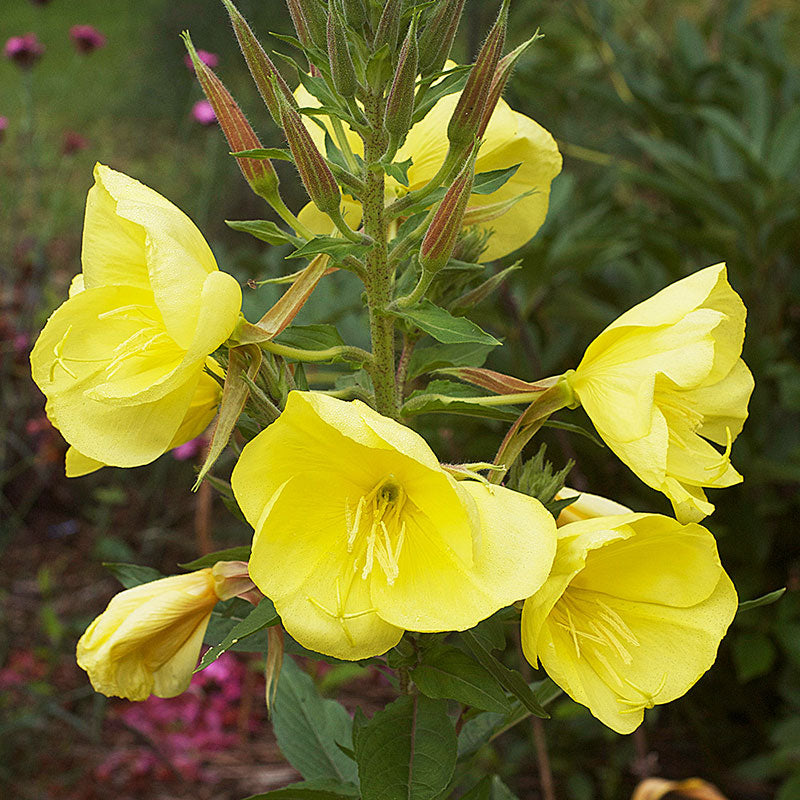Seed Packet
Evening Primrose 'Tina James'
Oenothera glazioviana
A large-flowered, (4") pure yellow evening primrose with a trick up its sleeve. Weedy looking during the day (it is best to site it with shorter flowers in front to hide its awkwardness), it sheds its coarse look when it bursts into bloom in the evening hours, as the flowers pop open from tightly-furled buds in under a minute. The star of many a nighttime garden party, evening primrose attracts both revelers and night-flying pollinators. Sow this biennial two years in succession for a yearly show.
SKU #S1342
Currently Unavailable
Notify Me When Available
































